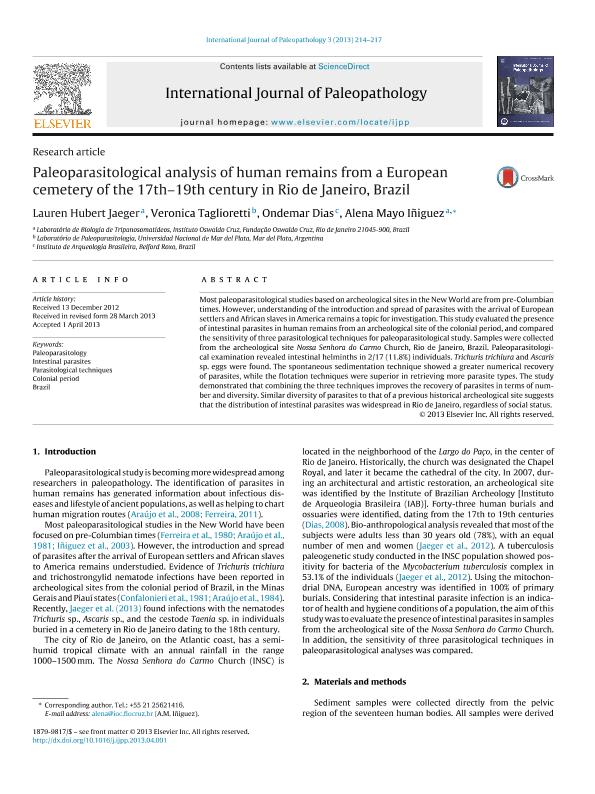Artículo
Paleoparasitological analysis of human remains from a European cemetery of the 17th–19th century in Rio de Janeiro, Brazil
Fecha de publicación:
04/2013
Editorial:
Elsevier Science
Revista:
International Journal of Paleopathology
ISSN:
1879-9817
Idioma:
Inglés
Tipo de recurso:
Artículo publicado
Clasificación temática:
Resumen
Most paleoparasitological studies based on archeological sites in the New World are from pre-Columbian times. However, understanding of the introduction and spread of parasites with the arrival of European settlers and African slaves in America remains a topic for investigation. This study evaluated the presence of intestinal parasites in human remains from an archeological site of the colonial period, and compared the sensitivity of three parasitological techniques for paleoparasitological study. Samples were collected from the archeological site Nossa Senhora do Carmo Church, Rio de Janeiro, Brazil. Paleoparasitological examination revealed intestinal helminths in 2/17 (11.8%) individuals. Trichuris trichiura and Ascaris sp. eggs were found. The spontaneous sedimentation technique showed a greater numerical recovery of parasites, while the flotation techniques were superior in retrieving more parasite types. The study demonstrated that combining the three techniques improves the recovery of parasites in terms of number and diversity. Similar diversity of parasites to that of a previous historical archeological site suggests that the distribution of intestinal parasites was widespread in Rio de Janeiro, regardless of social status.
Archivos asociados
Licencia
Identificadores
Colecciones
Articulos(CCT - MAR DEL PLATA)
Articulos de CTRO.CIENTIFICO TECNOL.CONICET - MAR DEL PLATA
Articulos de CTRO.CIENTIFICO TECNOL.CONICET - MAR DEL PLATA
Citación
Jaeger, Lauren Hubert; Taglioretti, Verónica; Dias, Ondermar; Mayo Iñiguez, Alena; Paleoparasitological analysis of human remains from a European cemetery of the 17th–19th century in Rio de Janeiro, Brazil; Elsevier Science; International Journal of Paleopathology; 3; 3; 4-2013; 214-217
Compartir
Altmétricas




